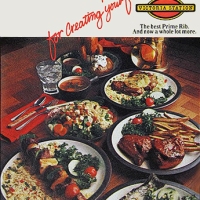 “Why do Americans stick to their own kind of food in France?” wondered an American aviator in Paris in 1917.
“Why do Americans stick to their own kind of food in France?” wondered an American aviator in Paris in 1917.
Good question, given that the Americans he was referring to were able to afford dining in the finest Paris restaurants. And that French cuisine had long enjoyed prestige in large American cities.
Perhaps it was simply longing for home that brought Americans to The Chinese Umbrella in the early 20th century. The Umbrella was a tea room serving American food that was located near the Bon Marché department store on Rue du Bac.
When it opened in 1905 it served only afternoon tea but soon expanded the menu and became a popular lunch spot. Shortly after its debut American newspapers took note and a story traveled around stating boldly that its luncheons “represent the finest cooking that can be obtained in Paris.” Although this seems unjustifiably boastful, The Chinese Umbrella was recommended in Baedeker and other travel guides.
 Among its specialties were homey dishes, many associated with the American South where the proprietor’s mother was from. A journalist writing about The Umbrella in 1908 hailed its okra soup, chicken a la king, tomato and cucumber salad, fried hominy, sweet potatoes, roast lamb, corn fritters, cold asparagus, strawberry ice cream, and waffles with maple syrup. He declared, “Not one of these dishes, apart from the cold asparagus, can be had in any of the famous Paris restaurants.” [advertisement from NY Sun, 1907]
Among its specialties were homey dishes, many associated with the American South where the proprietor’s mother was from. A journalist writing about The Umbrella in 1908 hailed its okra soup, chicken a la king, tomato and cucumber salad, fried hominy, sweet potatoes, roast lamb, corn fritters, cold asparagus, strawberry ice cream, and waffles with maple syrup. He declared, “Not one of these dishes, apart from the cold asparagus, can be had in any of the famous Paris restaurants.” [advertisement from NY Sun, 1907]
The Chinese Umbrella was the creation of Edith Fabris and her younger sisters, born in Shanghai of a father who was a British consul in Tientsin, China. While in China Edith gathered together a collection of Chinese artifacts that included embroidered satin hangings, delicate porcelain, and a four-yard-wide umbrella that formed a ceiling in one room of the restaurant. Her brother, who served with American-English forces to defeat the Boxer Rebellion, “picked up the valuable loot” that formed the tea room’s decorations. “Loot” is the correct word, since the aftermath of the anti-colonial, anti-Christian-missionary uprising has been described as “mad scenes of pillage.” [Douglas Rigby, The American Scholar, 1944]
Perhaps the looted items on display in The Chinese Umbrella explain why China’s ambassador to France who presided over the tea room’s opening was described in one account as seeming “a little bit dubious as to the dignity of the affair.”
Fabris also brought to Paris a recipe for Chinese vegetable curries that she described – with an authenticity claim that may strike us as odd today — as “true English-American colony China curries.” Fabris said that chefs from top Paris restaurants begged for her recipes. When she told them they could not be made without ingredients sent by her brother from China, they came to her tea room to sample curries and try to analyze how they were made.
Although most of the tea room’s customers were apparently American or English it also did a good business selling baked goods such as mincemeat pies, plum puddings, and gingerbread to French families. During World War I Fabris supplied cakes to American soldiers in French hospitals.
At some point the tea room moved to a new location as shown on the blue postcard shown above. I could find no trace of it after 1920.
© Jan Whitaker, 2017













 It's great to hear from readers and I take time to answer queries. I can't always find what you are looking for, but I do appreciate getting thank yous no matter what the outcome.
It's great to hear from readers and I take time to answer queries. I can't always find what you are looking for, but I do appreciate getting thank yous no matter what the outcome.



Nice article
Great article, Jan ! I would have never thought such stories occurred in Paris a century ago, especially while mixing 3 different cultures all in one place. So interesting (and unique, I think)!
Thank you. Before I researched The Chinese Umbrella I thought it was British like so many other Paris tea rooms. I was surprised too.
Fascinating article! Who knew the French would tolerate American food at that early time? And the Chinese connection!